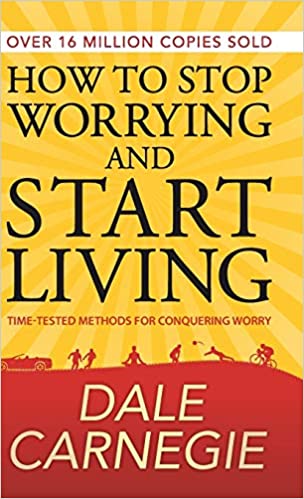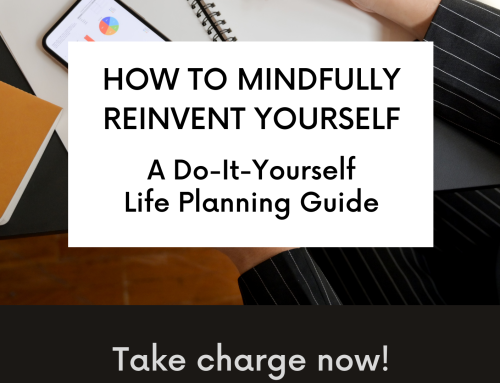
The following is a Clarity Book Summary written by Clifford Jones. The book is, How to Stop Worrying and Start Living by Dale Carnegie
Table of Contents
- Why Read How to Stop Worrying
- About Dale Carnegie
- Book Overview
- Part One – Fundamental Facts You Should Know About Worry
- Part Two – Basic Techniques In Analyzing Worry
- Part Three – How To Break The Worry Habit Before It Breaks You
- Part Four – Seven Ways to Cultivate A Mental Attitude That Will Bring Peace and Happiness
- Part Five – The Perfect Way To Conquer Worry
- Part Six – How to Keep from Worrying About Criticism
- Part Seven – Six Ways To Prevent Fatigue And Worry And Keep Your Energy And Spirits High
- Part Eight – “How I Conquered Worry.”
- Book Benefits
- Conclusion
- About Clifford Jones
Why Read How to Stop Worrying
Because you worry too much, perhaps, or you’re curious about the title and the #1 driver of anxiety, stress, and disease. If you believe having excellent physical and mental health is a priority, learning how to stop worrying and start living is the way to go.
About Dale Carnegie
Dale Carnegie (Carnagey until c. 1922) was an American writer and lecturer. He wrote several books and developed courses in self-improvement, salesmanship, corporate training, public speaking, and interpersonal skills.
Carnegie was born on November 24, 1888, and died on November 1, 1955, at 67. He lived on a farm. His childhood compelled him to overcome his fear of public speaking.
Carnegie wrote How to Win Friends and Influence People in 1936, which continues to be popular today. He also wrote How to Stop Worrying and Start Living (1948), Lincoln the Unknown (1932), and several other books.
The primary idea he teaches us is that it is possible to change other people’s behavior by changing one’s behavior towards them.
Book Benefits
- When you train yourself to stop worrying, and you learn to become accepting, kind, and in service to others, you will eliminate the primary driver of stress, anxiety, insomnia, and disease, naturally.
Book Overview
How to Stop Worrying is one of the best books ever written for helping people become more confident, clear communicators. The original copyright dates include 1944 through 1947. Donna Dale Carnegie, Dale’s widow, updated the current edition in 1984.
The book includes eight parts, twenty-eight chapters, and 304 pages. The book’s final part consists of thirty-one short stories about people who changed their lives following the book’s principles.
Part One – Fundamental Facts You Should Know About Worry
- Live in “Day-tight” Compartments – “Shut the iron doors on the past and the future. Live in Day-tight compartments” means live in the present. The way to do that is to train yourself.
- A Magic Formula for Solving Worry Situations – Do these things to stop worrying: 1. Ask yourself what the worst-case scenario is. Prepare to accept it if you must. Calmly proceed to improve on the worst. What Worry May Do to You – Worry can make us physically ill and worse. Worry will “destroy our bodies and minds by anxiety, frustration, hatred, resentment, rebellion, and fear.”
Part One ends with three rules: Rule #1: “Just live each day until bedtime.” Rule #2: When trouble arises, ask the questions. Rule #3: Those who do not know how to fight worry die young. Know the cost of worrying.
Part Two – Basic Techniques In Analyzing Worry
- How to Analyze and Solve Worry Problems – Ask yourself four questions; 1. What am I worrying about? 2. What can I do about it? 3. What am I going to do about it? 4. When am I going to start taking action? Get the facts, consider your side of the story, write out the points of view, pros, and cons, then make a decision and move on.
- How to Eliminate Fifty Per Cent of Your Business Worries – Analyze every worry or problem you have by asking these four questions: 1. What is the problem? 2. What is the cause of the problem? 3. What are all possible solutions? 4. What solution do you suggest?
Part two ends with four rules: 1. Get the facts. 2. Make a decision. 3. Take action. 4. Analyze problems with the four questions.
Part Three – How To Break The Worry Habit Before It Breaks You
- How to Crowd Worry Out of Your Mind – In short, keep busy. “The worried person much lost himself in the action lest he wither in despair.”
- Don’t Let the Beetles Get You Down – Don’t allow yourself to get upset by small things; forget them. “Life is too short to be little.”
- A Law That Will Outlaw Many of Your Worries – Take time to “examine the record.” Ask yourself, “What are the chances, according to the law of averages, that this event I am worrying about will ever occur?”
- Co-operate with the Inevitable – The basic principle in this chapter is to accept what happens and move on to the following positive action. The way to serenity is practicing acceptance. Try the Serenity Prayer; “God grant me the serenity to accept the things I cannot change, courage to change the things I can, and wisdom to know the difference.” Go with the flow and let go of things you can’t control.
- Put a “Stop-Loss” Order on Your Worries – If you’re upset with mistakes you make, stop to ask yourself three questions: 1. How much does this worry matter? When will you set a “stop-loss” order and forget the worry? 3. How much will it cost you to keep worrying?
- Don’t Try Saw Sawdust – The primary message in this chapter is don’t beat yourself up over your mistakes. Get busy on the next task, action, and goal. Make the best of your situation.
Part Three ends with six rules: 1. Keep busy. 2. Don’t sweat the small stuff. 3. Assess the odds and law of averages. 4. Go with the flow, cooperate with the inevitable. 5. Put a “stop-loss” on your worries. 6. Don’t saw sawdust.
Part Four – Seven Ways to Cultivate A Mental Attitude That Will Bring Peace and Happiness
- Eight Words That Can Transform Your Life – The chapter quotes Marcus Aurelius, “Our life is what our thoughts make it.” Think, act cheerfully, and you will feel cheerful.
- That High Cost of Getting Even – Never try to get even with enemies. You’ll harm yourself, not them. Don’t think about people or things you don’t like.
- If You Do This, You Will Never Worry About Ingratitude – Expect ingratitude to avoid worrying about ungrateful people. Focus on the joy of giving. Train yourself to be grateful.
- Would You Take a Million Dollars for What You Have? – The lesson in this chapter is to count your blessings, not your troubles. Relative to millions of others, you’re doing great.
- Find Yourself and Be Yourself: Stop imitating others. Find yourself. Be yourself. There’s only one of you.
- If You Have a Lemon, Make a Lemonade – Make the best of every situation is the message of this timeless metaphor for lemonade.
- How to Cure Depression in Fourteen Days – Be interested in others. Do a good deed every day that puts a smile on someone’s face.
The seven rules at the end of part four include 1. Think happy thoughts. 2. Forget revenge, 3. Expect ingratitude. 4. Count your blessings, not troubles. 5. Be yourself. 6. Make the best of everything. 7. Create happiness for others if you’re depressed.
Part Five – The Perfect Way To Conquer Worry
- How My Mother and Father Conquered Worry – Consider prayer a practical thing for conquering worry. Prayer puts into words what is troubling us. Prayer gives us a sense of sharing our burdens. Prayer is also doing something positive.
Part Six – How to Keep from Worrying About Criticism
- Remember That No One Ever Kicks a Dead Dog – The metaphor teaches us that unjust criticism is a compliment in disguise if we choose to see it that way.
- Do This and Criticism Can’t Hurt You – Do your best. When criticized, put up an imaginary umbrella and keep the “rain of criticism from running down the back of your neck.”
- Fool Things I Have Done – Another tool to keep you from worrying is keeping a mental record of mistakes you’ve made. Nobody is perfect! Be willing to ask for unbiased, helpful, constructive criticism, including yourself.
Three rules at the end of part six: 1. Use criticism as a compliment. 2. Always do your best. 3.
Part Seven – Six Ways To Prevent Fatigue And Worry And Keep Your Energy And Spirits High
- How to Add One Hour a Day to Your Waking Life – Learn to rest and relax. “Rest is not a matter of doing absolutely nothing. Rest is repair.” – Daniel W. Josselyn.
- What Makes You Tired and What You Can Do About it – The human brain itself is tireless. What makes us tired or fatigued is most often our attitude. Worry, tenseness, and emotional upsets are the three biggest causes of fatigue. The solution is training yourself to recover and relax through the day.
- How to Avoid Fatigue and Keep Looking Young – Keep a notebook or journal with inspirational notes, reading, etc. Never dwell on the shortcomings of others. Plan tomorrow. Avoid tension and fatigue by resting.
- Four Good Working Habits That Will Help Prevent Fatigue and Worry – Keep an orderly desk, drawers, files, and working space. “Order is Heaven’s first law.” Do things in order of importance. Solve problems quickly instead of letting them linger. Learn to be organized, delegate, and supervise others.
- How to Banish the Boredom That Produces Fatigue, Worry, and Resentment – Get rid of worry, frustration, and resentment; act as if you’re full of energy and nothing can bother you. Fake it til you make it. Act as if.
- How to Keep from Worrying and Insomnia – If you can’t fall asleep, don’t worry about it. Tell yourself it’s okay to lay awake all night if you have to. Read a book, lie in bed with your eyes closed, and breathe. You’ll be resting even if you’re not asleep. Don’t sweat it.
Part Eight – “How I Conquered Worry.”
Thirty-One Short Stories
Conclusion
How to Stop Worrying and Start Living is one of the most helpful books ever written. The wide range of stories and examples of how effective, simple, healthy habits can be if you’re willing to learn and practice daily.
If you enjoyed my Bottom Line Book Summary, please buy and read the entire book by clicking here. Amazon pays me a small affiliate commission, which helps me write these summaries and save you time. You pay the same price when you use my affiliate link.
About Clifford Jones
Cliff Jones is a third-generation entrepreneur, author, speaker, family, and community leader.
He’s the founder and managing partner of Clarity Strategic Advisors, LLC, based in Scottsdale, Arizona, a strategic advisory, training, and executive coaching business.
Over the last 30 years, Cliff has successfully started and sold two small businesses, authored and co-authored five books, and hundreds of articles you can find on his blog, Amazon, The Business Journals, Huff Post, Medium, and LinkedIn.
You can connect with Cliff Jones at www.CliffordJones.com.



